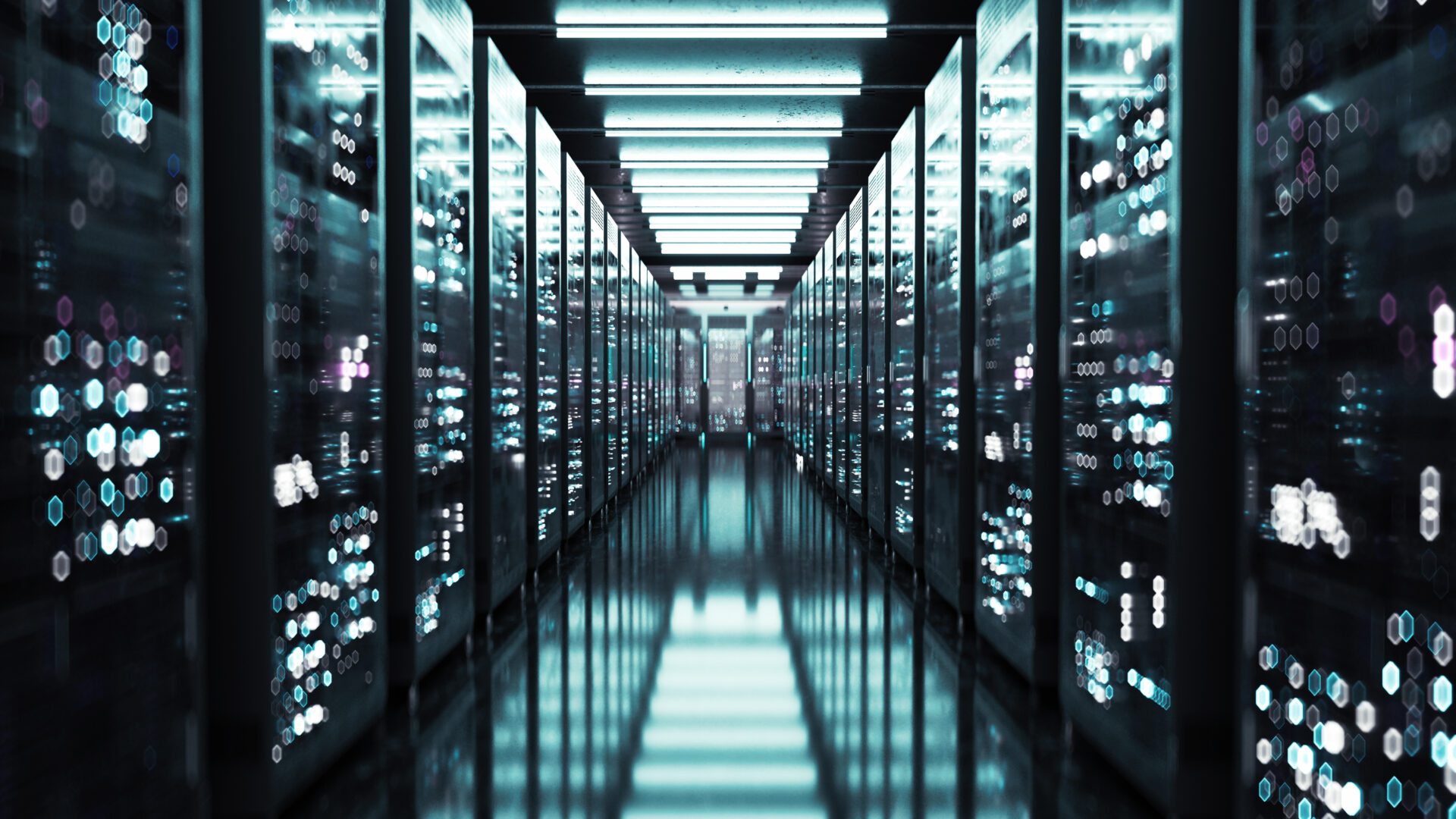Server farms, Bitcoin mining operations, and NFT processing centers are major electricity consumers. At times, they can challenge the grid’s ability to meet energy demands by the sheer volume of their collective energy usage. Still, even though these operations are demand heavy, they might yet provide a solution that helps energy companies reach emissions standards by tapping into renewable energy. Best of all, energy companies have collaborated with these processing centers and farms on demand, leading to a more resilient infrastructure. Whether that approach works will likely depend on the relationships between energy companies and tech companies, the continued interest in these crypto-mining/blockchain technologies, and whether any legal restrictions are levied on these operations.
How Much Power Do Digital Technologies Require?
Individually, a typical laptop uses about 0.05 kWh of power per day, an insignificant demand compared to the needs of a community, commercial properties, or industry. That escalates quickly when you put thousands of computers in one location and run them 24 hours a day. Let’s look at just how challenging these technologies are to the power grid.
Server Farms
Server farms play critical roles in today’s business and consumer technology. They provide digital space for websites, mobile apps, data-heavy research, and cloud-based services like software-as-a-service (SaaS) solutions, infrastructure-as-a-service (IaaS), and platform-as-a-service (PaaS).
Servers have essential features that make modern computer technology possible. Businesses rely on them for data storage with redundant backups, e-commerce processing, and access to remote networks. Consumers use them to do everything from playing games on their smartphones to checking their bank accounts online.
It’s difficult to imagine how industries would have survived the COVID-19 pandemic without remote work strategies made possible by server farms. The shift in working culture hasn’t ended as COVID fatalities decrease. Now that many people have experienced the benefits of remote work and flexible schedules, they want to continue performing their jobs outside of the traditional workplace.
The growing reliance on cloud technology and remote network access means that industries need more server farms that consume enormous amounts of energy.
Server Farms & Electricity Consumption
Unfortunately, no national or global authority tracks the electricity consumption of server farms. That makes it difficult to determine how much electricity they use. According to Energy Innovation, an energy and climate policy think tank, the world’s largest server farms contain tens of thousands of devices that consume more than 100 MW per day, roughly the amount used daily by 80,000 households in the U.S.
Server farms and data centers need electricity for more than running servers, though. Servers generate heat, so they require massive cooling systems. One estimate shows that 43% of a server farm’s electricity goes to powering servers, and another 43% goes to cooling the equipment.
Some experts argue that new server farms will not pose a significant challenge for the grid because the technology keeps getting more efficient. As long as microchip efficiency continues to roughly double every year – a concept known as Moore’s Law – server farms should use less electricity while finishing more work, that is assuming Moore’s Law hasn’t reached its natural conclusion. The efficiency trend has slowed some over the last decade, though, so it’s impossible to know how much power future servers will need, although as of now all estimates suggest that continued growth to match the pace of public need.
Bitcoin Mining
Bitcoin’s creators intentionally set a cap of 21 million units to limit the supply. Ideally, some of the digital currency’s value comes from its scarcity. Just like there’s a limited amount of gold on the planet, there’s a limited amount of Bitcoin that can exist.
Bitcoin miners have already generated more than 19.07m Bitcoins. As miners get closer to 21 million Bitcoin units, the calculations needed to unlock more currency become increasingly complicated. In 2009, a miner’s computer would need about 1 trillion attempts to generate a new Bitcoin. On September 15, 2022, mining a Bitcoin was 32.045 times more difficult than in 2009.
The growing difficulty of unlocking new Bitcoin units has created an industry focused on high-powered computers that contain multiple graphics processing units (GPUs) capable of performing complex calculations. These devices use a staggering amount of power that keeps increasing as calculations become more complex.
Bitcoin Electricity Consumption and Carbon Footprint
Currently, the Bitcoin-mining industry uses approximately 131.02 TWh per year, comparable to the electricity consumption of the entire nation of Argentina. As recently as 2020, the industry consumed about 70 TWh per year. Within just two years, the mining’s electricity consumption has nearly doubled.
Many see this as an unsustainable situation that burdens electrical grids and contributes an out-sized amount of harmful emissions to the atmosphere. The carbon footprints of Bitcoin mining and transactions emphasize the potential role the industry plays in climate change. Bitcoin mining generates about 73.08 metric tons of CO2 per year, a carbon footprint comparable to Turkmenistan’s. A single transaction has a carbon footprint of about 782.8 kg, the equivalent of 1.73 million Visa payment transactions.
NFTs (Non-fungible Tokens)
NFTs rely on blockchain technology, also used by Bitcoin and other cryptocurrencies. Blockchains use peer-to-peer networks to store and create information. Each time a transaction takes place, computers on the network verify that the action occurred and add a block describing the action. For example, when someone buys an NFT, the distributed, peer-to-peer network verifies the purchase and adds information about the new owner.
Some artists have found that they can make thousands of dollars selling NFTs. One 13-year-old artist in India became a multimillionaire selling NFTs featuring dinosaur-inspired portraits. An individual piece of her art sold for nearly $11,750. One website auctioned another artist’s GIF of a cat with a Pop-Tart body for nearly $600,000. Understandably, artists see financial successes like this and want to use the technology to earn money and find wider audiences. Unfortunately, selling NFTs comes at a high cost to the grid and environment, though.
NFT Electricity Consumption
Most NFT transactions take place on the Ethereum network, which forces buyers to purchase Ether, a cryptocurrency that competes with Bitcoin and uses similar blockchain technology. Each transaction uses a concerning amount of electricity that has some artists reconsidering whether they want to participate in this area of the industry.
After French artist Joanie Lemercier sold six NFTs through the website Nifty Gateway, he found that the transaction used 8.7 MWh of electricity. It took about 10 seconds for the transaction to use roughly the same amount of energy that Lemercier’s studio consumes in two years.
It’s difficult to calculate the annual or monthly electricity needs of NFTs because it involves so many factors, including how marketplaces sell items and how much Ether buyers spend. Using Lemercier’s NFT consumption and the number of transactions, though, it’s possible to find an approximation. In August 2022, there were about 21,400 NFT transactions. If each used the same amount of electricity as Lemercier’s (1.45 MWh per NFT), August’s transactions consumed 31,030 MWh.
The amount becomes more concerning when you look at transactions from August 2021 to August 2022. Some months had much more sales than others. Overall, there were about 713,675 recorded NFT transactions, which comes to 1,034,829 MWh, or 1.034829 TWh. Far lower than the amount Bitcoin miners consume, but still enough to strain local grids.
New Technologies Create Opportunities & Challenges
These three new technologies consume a lot of power, but there are also potentially positive attributes that power companies can use.
Several companies already use solar systems to generate much of the power they need to operate servers and computers. Google installed 1.6 million solar panels in Tennessee and Alabama to help power its data centers in the two states. The solar farms have a combined capacity of 300 MW. The data centers still need 413 MW more for ongoing operation. Google pledges to purchase renewable power for the centers.
Some Bitcoin mining operations take a similar approach. Aspen Creek Digital in western Colorado has a 10 MW solar system that generates all the power the center needs. The company is looking to open additional sites in Texas. Overall, the Bitcoin mining industry gets 40% to 75% of its electricity from renewable sources. Some companies also use excess natural gas typically lost while drilling for oil and gas.
There is far less information about NFT processing centers, making it impossible to determine what role they might play in straining or supporting the grid.
Tech Centers Have Enormous Energy Generation and Storage Potential
Server farms and Bitcoin mining operations want to harness renewable energy for two reasons: it helps them save money by avoiding the fluctuating prices of electricity, and it protects their industries from criticism that they contribute to climate change.
These tech centers tend to choose locations with inexpensive electricity, allowing them to pull power from the grid when needed. In some circumstances, though, it becomes more profitable for the centers to sell electricity to the energy company. For example, savvy Bitcoin miners will sell the electricity they produce when the price of energy exceeds the value of Bitcoin.
These circumstances aren’t hypothetical. They’ve already happened. During the summer of 2022, when Texas’s temperatures pushed electricity infrastructure beyond its abilities, several Bitcoin miners turned off their computers to sell electricity to ERCOT. In July 2022, Riot Blockchain decreased its mining operation to sell $9.5 million of renewable power to ERCOT. It also mined $7 million worth of Bitcoin to match its revenue from July 2021. This is a type of demand response relatively novel, but ultimately worth exploring as these enterprises continue.
With a distributed energy resource management system (DERMS), massive server operations can be grouped to respond to demand flexibility needs. Furthermore, by using demand forecasting technology, utilities can get ahead of any potential electric needs to better coordinate any large-scale demand events, including something very much like what happened in Texas in July 2022.
As long as energy companies are willing to pay electricity creators the right price, they will gladly contribute renewable power to the grid. Distributed energy resources (DERs) often refer to home solar systems and battery storage but can apply to any technology that can produce or store energy.
You can collaborate with small DERs to make virtual power plants and meet growing electric demand and meet emission standards. With electricity from server farms and Bitcoin mining centers, you have a virtual power plant in a single location. You might not need to use it regularly, but you can tap into its enormous energy generation and storage potential when your service area needs it most.
Conclusion: Server Farms, NFTs, & Bitcoin Mining
Clearly, putting a large number of computers and processors in one place stresses the grid. When tech centers generate some of their electricity, though, they become potential resources for energy companies and communities. Since server farms aren’t going anywhere anytime soon energy companies should keep an eye on how these technologies evolve so they can develop strategies that maximize use while saving money and curbing emissions.






